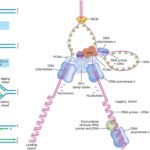IGCSE Biology 76 Views 1 Answers
Sourav PanLv 9November 14, 2024
Explain the effect of changes in pH on enzyme activity in terms of shape and fit and denaturation
Explain the effect of changes in pH on enzyme activity in terms of shape and fit and denaturation
Please login to save the post
Please login to submit an answer.
Sourav PanLv 9May 15, 2025
The effect of changes in pH on enzyme activity is significant and can be understood in terms of the enzyme’s shape and fit, as well as the process of denaturation. Here’s a detailed explanation:
1. Shape and Fit of Enzymes
- Active Site Structure: The active site of an enzyme is specifically shaped to bind to its substrate. This shape is determined by the enzyme’s three-dimensional structure, which is influenced by the interactions between amino acids that make up the enzyme.
- Optimal pH: Each enzyme has an optimal pH at which it functions most effectively. At this pH, the ionization state of the amino acids in the active site is conducive to forming the correct shape for substrate binding. For example, pepsin, an enzyme that operates in the acidic environment of the stomach, has an optimal pH around 1.5 to 2.
- Effect of pH Changes: When the pH deviates from this optimal range, it can affect the ionization of amino acids within the enzyme. Changes in hydrogen ion concentration can alter the charge properties of these amino acids, potentially disrupting ionic bonds and hydrogen bonds that maintain the enzyme’s structure. This disruption can lead to changes in the shape of the active site, making it less complementary to the substrate.
2. Denaturation
- Denaturation Process: If the pH moves significantly away from an enzyme’s optimal range, it can lead to denaturation. Denaturation refers to a structural change in the enzyme that results in a loss of its functional shape.
- Loss of Functionality: When an enzyme denatures, its active site may no longer fit its substrate effectively. This means that even if substrates are present, they cannot bind properly to the active site, leading to a decrease or complete loss of enzymatic activity.
- Irreversibility: In many cases, denaturation caused by extreme pH changes is irreversible. Once the enzyme loses its native conformation due to denaturation, it cannot return to its original shape and thus cannot catalyze reactions anymore.
Summary
In summary, changes in pH significantly affect enzyme activity through:
- Shape and Fit: The optimal pH allows enzymes to maintain their specific shape for effective substrate binding. Deviations from this optimal range disrupt ionization states and alter the active site’s shape.
- Denaturation: Extreme pH levels can lead to denaturation, resulting in a loss of structural integrity and functionality. Denatured enzymes cannot catalyze reactions effectively due to their altered shapes.
0
0 likes
- Share on Facebook
- Share on Twitter
- Share on LinkedIn
0 found this helpful out of 0 votes
Helpful: 0%
Helpful: 0%
Was this page helpful?




